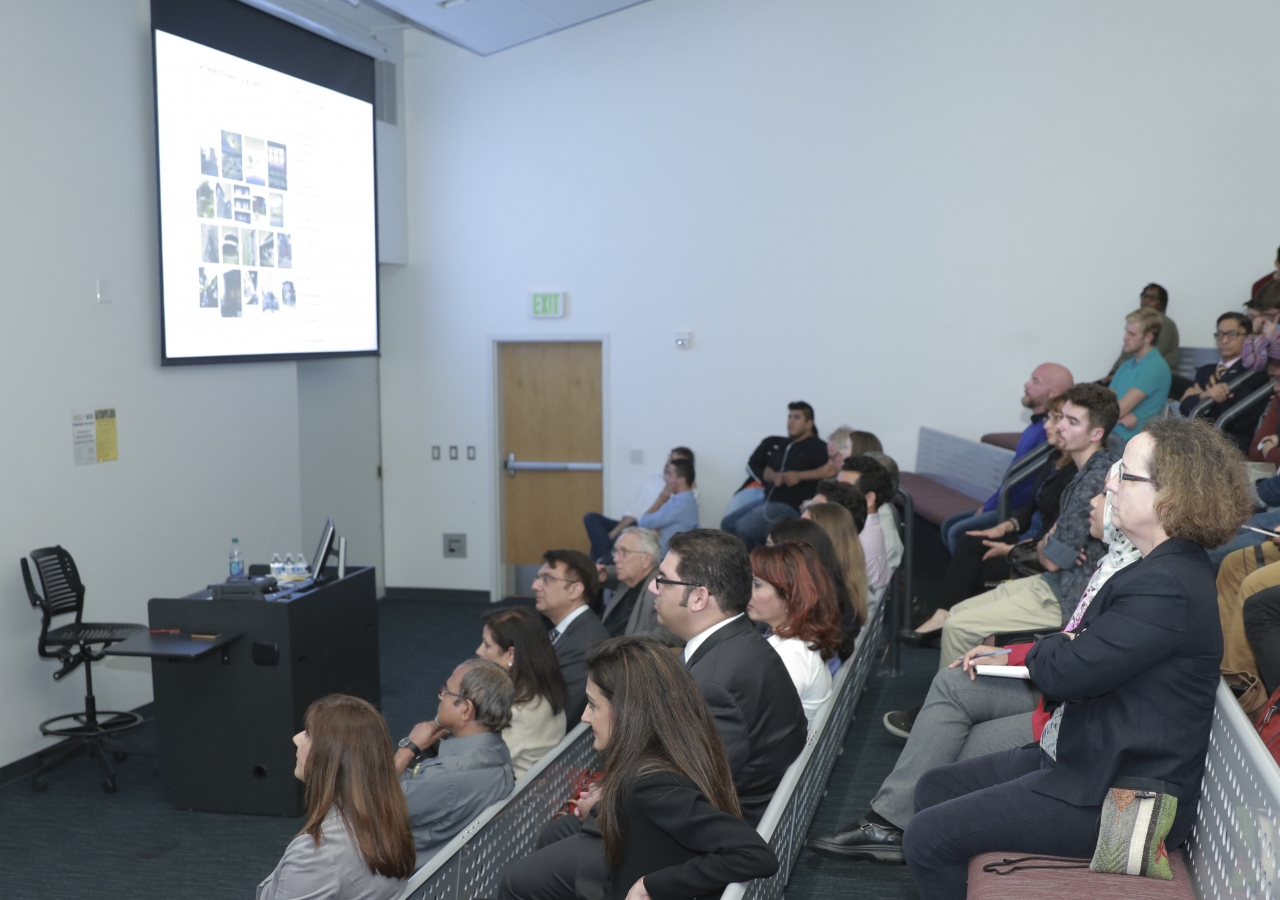In “Architecture and Society,” Ismail Serageldin points out that much of the Muslim world today reflects societies in transition, where the role of the architect is of profound importance in appreciating and preserving the past--- while refining the society’s perceptions of taste and its expression of cultural identity. Above all, architects and planners need to be guided by a new vision that incorporates the essence of the cultures of those for whom they design. Seragelclin further states that “the Aga Khan Award for Architecture (AKAA) has consciously underlined the collective responsibility of all involved in the process of creating a building which is deserving of recognition.”
These notions were discussed at the Kennesaw State University (KSU) lecture series on Diversity and Pluralism. The lecture, entitled, “At the Cutting Edge: A Retro-Prospective of the Aga Khan Award for Architecture,” was recently organized by KSU, in collaboration with the Aga Khan Council for the Southeastern United States.
Speaking at the event, Prof. Hasan-Uddin Khan, Convenor of the first cycle of the Aga Khan Award for Architecture and Distinguished Professor of Architecture and Historic Preservation at Roger Williams University, said, “AKAA is one of the most prestigious international architectural awards in the world. The US$ 1 million award given every three years to projects selected by an independent jury recompenses all the actors involved in the achievement of excellence, whether they are architects, clients, craftsmen, engineers or end-users. At its core, the Award engenders a process of thinking about the built environment and culture. It is much more than a prize.”
Prof. Khan remarked Khan also that the vision of the Award was to protect the past and inspire the future; to improve quality of life; and to examine, analyze, understand and try to influence the dynamics of physical change in Muslim societies.
AKAA is one of the oldest and most prominent awards in architecture. It was established by Mawlana Hazar Imam in 1977 to identify and encourage building concepts that successfully address the needs and aspirations of communities in which Muslims have a significant presence.
The selection process emphasizes architecture that not only provides for people's physical, social, and economic needs, but that also stimulates and responds to their cultural and spiritual expectations. Particular attention is given to building schemes that use local resources and appropriate technology in an innovative way, and to projects likely to inspire similar efforts elsewhere.
At the Aga Khan Award for Architecture 2016 ceremony, Hazar Imam said that “the spirit of the Award has been an inclusive one, valuing all manner of buildings and spaces, from skyscrapers to mud huts, from residences to work and gathering spaces, from reforestation and financing projects to cemeteries, bridges and parks, from the accomplishments of signature architects to those of anonymous craftsmen. This pluralistic approach may not echo the usual definition of the word ‘architecture’, but it is the closest we can get to the central inclusive message we want this Award to convey.” He also reaffirmed his belief that “the spirit of pluralism has been central to the great achievements of past Islamic cultures - and it remains a central principle for these Awards.”
Echoing Hazar Imam’s desire to highlight the importance of having a more pluralistic approach in architecture, Prof. Khan said “For too long, we have looked at architecture under certain lenses. They tend to be homogenous; they tend to be limited. And you realize that different cultures have very different needs and requirements, and in order to reflect what is going on in the real world, one has to look at the diversity. It’s about looking at architecture with a different lens. It’s about looking at reality.”
Prof. Khan added that the early-on AKAA led to discourses underlining that architecture should not be judged from “a point of view,” and that architecture could provide an answer to many issues and problems. “The Award encouraged that conversation about diversity and pluralism in architecture and that changed the discourse – that has been the biggest contribution of the AKAA,” he said, underscoring the impact that the Award has made in the realm of architecture.
About 250 KSU students and graduates attended the lecture, which was followed by an exhibition that showcased the nominated projects of the 2016 Award cycle.
Arash Soleimani, Assistant Professor at KSU and Co-Chair of the lecture series, emphasized the need for students to know how place-making and the notion of architecture can inform the process of design. “Rather than just thinking about style and type, it is important for students to understand how architecture can bring people together in the globalized world,” he said. Originally from Iran, he also shared his experience of visiting the Tabiat Bridge, one of the 2016 AKAA winners, and how the bridge had become a place for the community to get together. “It was such an amazing experience to see people gathered at the bridge, talking and eating together, sharing ideas and celebrating their culture,” said Soleimani, while talking to students at the exhibition.
The lecture was well-received by the students of the University. Arselan Lakhany, a graduate of KSU said that “the Award really inspires students to understand that architecture is more about the inhabitant group and less about the architects. It’s about the people who are using it, not just the people designing it.”
Farhan Samnani, a fifth year KSU student, said that the talk answered a lot of questions and inspired him to create architecture that is more social and works on improving the lives of people as well as looking at the community as a whole.












